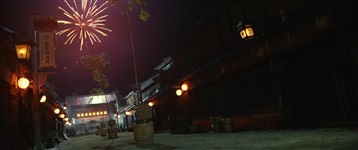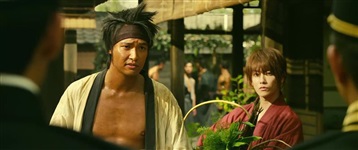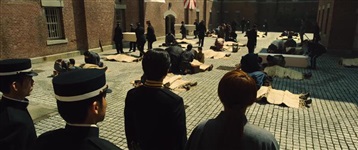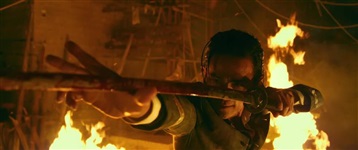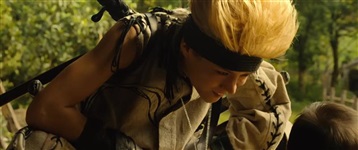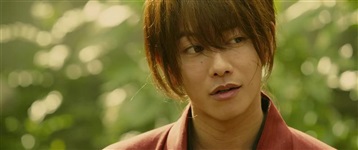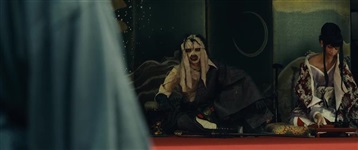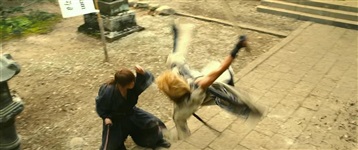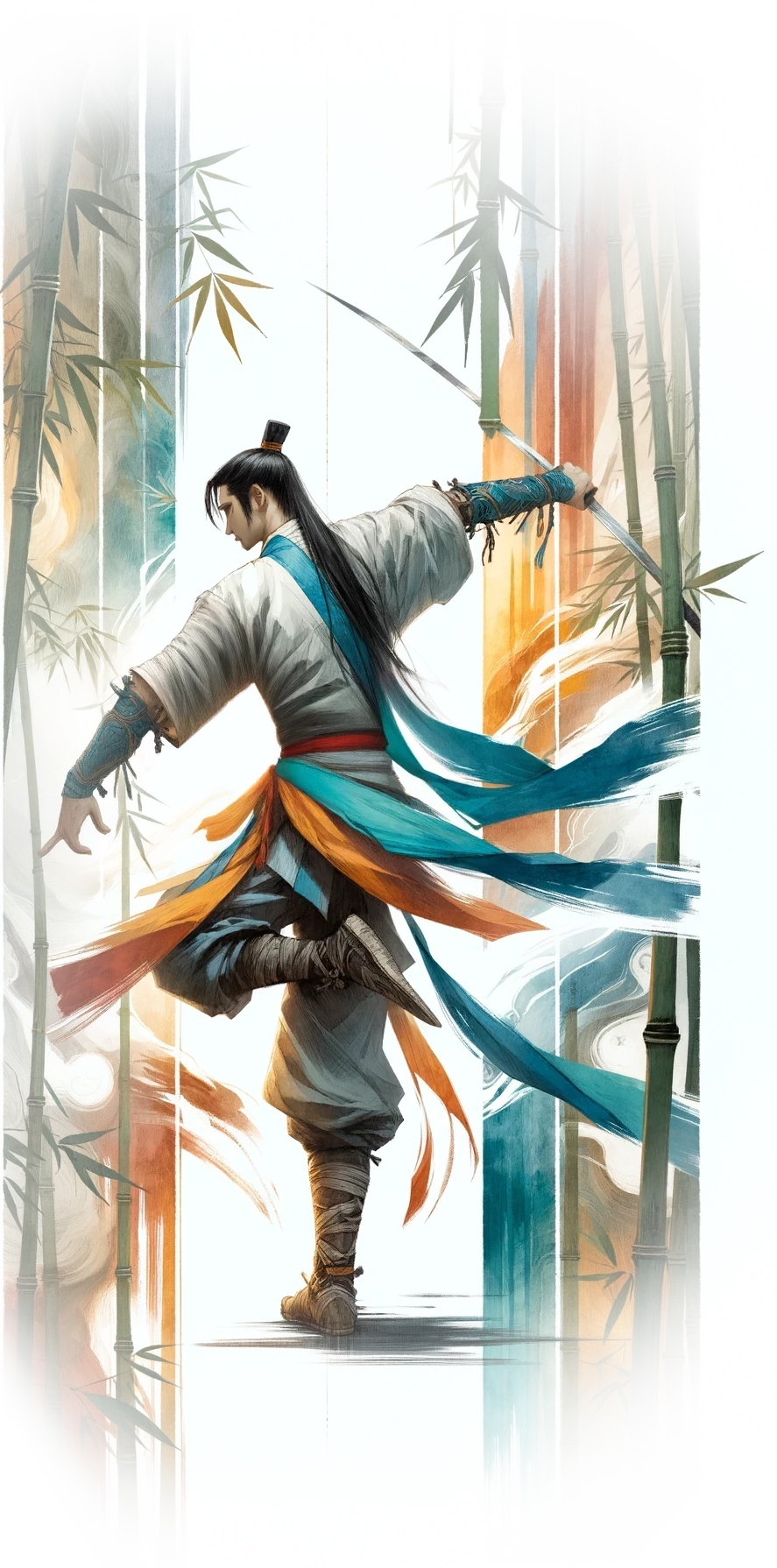Rurouni Kenshin: Kyoto Inferno (2014)
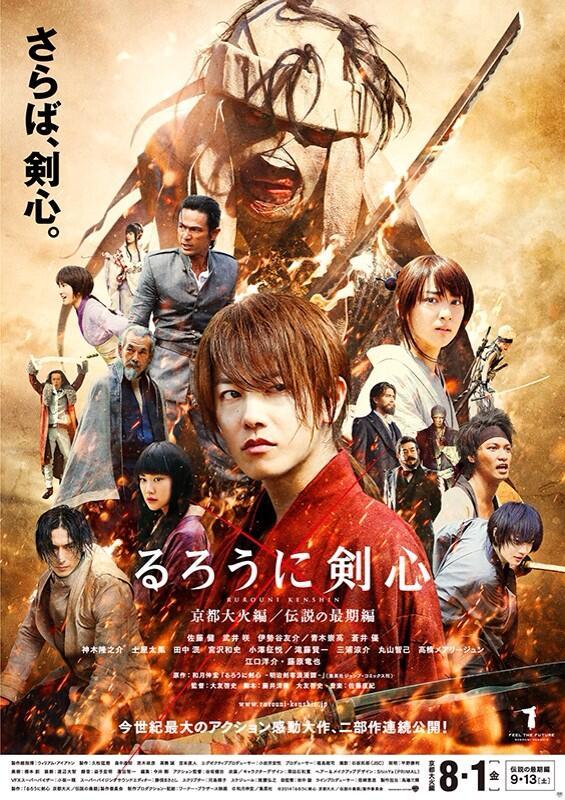
After the events of the first film, Kenshin settles down to a peaceful life in Tokyo with his new surrogate family, spurning requests from the locals to teach them his swordplay, convinced that his martial skills serve no purpose in the new era. His peace is disturbed when agents from the government approach him asking for his assistance in defeating the vicious and bloodthirsty rebel Shishio, who is leading an insurrection in Kyoto.
Shishio was, like Kenshin, an assassin for the rebellion, but with a more bloodthirsty streak. When the war was over the new government decided he was too violent for the new era and plotted to kill him. Stabbed and set on fire, he was left for dead but miraculously survived. Some years later, filled with rage and bound in bandages like a flame-grilled mummy, Shishio launches a violent campaign to overthrow the government that betrayed him.
Kenshin at first wants nothing to do with the government's request, having hung up his sword, but after seeing the number of good officers that have been slaughtered by Shishio he reluctantly agrees to go to Kyoto and help stop him - without breaking his vow never to kill again, if he can help it.
RUROUNI KENSHIN was one of the more enjoyable films of recent years, shamelessly commercial but so slick and well made that only the most churlish viewer could find something to complain about. Due to its success a sequel was inevitable - or rather a pair of sequels, with KYOTO INFERNO being the first part (and the awfully titled Rurouni Kenshin: The Legend Ends to follow and complete the story). The two part approach works well, for the first part at least, giving the film plenty of room to breathe and develop the various new characters it introduces.
The production values are just as high this time around, with quite beautiful cinematography and art direction. I find that modern samurai films often feel less authentic than the classics due to the more modern equipment used making the period setting seem artificial. That is not the case here, showing that with sufficient attention to detail it is still possible to evoke an atmosphere of historicity - even with the stylisation inherited from the manga/anime source material (mainly in the characters' appearance).
Takeru Satoh is as charismatic as before as Kenshin - too young and pretty to be entirely convincing as a veteran swordsman, but charming enough to be forgiven. The rest of the cast are all well suited to their roles except perhaps Tatsuya Fujiwara as Shishio, though it might just be that I can't help playing Battle Royale in my internal cinema whenever I see him, which is a distraction. Given that he's barely visible under the bandages and burns this only really happens when he speaks in this film, though.
The action scenes are once again the highlight of the film, with superb choreography and execution. Kenshin's trademark ground runs are less prevalent this time, but his speed, fluidity and power are otherwise undiminished. Choreographer Kenji Tanigaki designs some really exciting fights, a mix of high speed takedowns of entire groups of lesser fighters and more prolonged one-on-ones with the few fighters that present Kenshin with any serious competition. Satô impresses in the fight scenes, clearly not doubled as often as you might expect for such sophisticated choreography. Other cast members also carry themselves well in their action scenes, with diminutive actress Tao Tsuchiya particularly impressing with her athletic moves.
Although clearly the first part of a larger storyline, KYOTO INFERNO has its own arc and does not feel like an incomplete experience when the end credits roll. It's probably less necessary than you might think to have seen the first film to enjoy this one, though obviously better to do so - and since it's so good, why wouldn't you? If you enjoyed the first RUROUNI KENSHIN film then it's hard to imagine that you wouldn't enjoy the second.
Definitely one of the most exciting film series Japan has produced in recent years.
Cast
Crew
| Director | |
|---|---|
| Action Director | |
| Writer | |
| Cinematographer |
